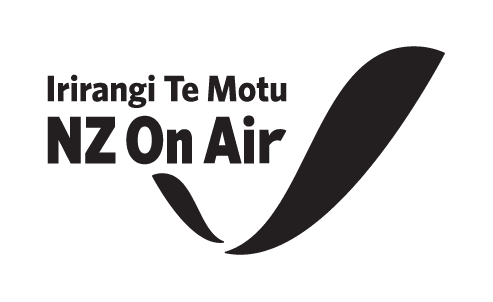Public Interest Journalism funded through NZ On Air
Local kaitiaki and scientists from Manaaki Whenua Landcare Research have formed new partnerships to protect lowland native forests and taonga species in Tairāwhiti Gisborne.
The collaboration was sparked by the threat of losing these forests and species because of climate change and extreme weather events such as Cyclone Gabrielle. 
The team, led by Dr Warwick Allen and Paula Godfrey (Ngāpuhi, Ngāti Whatua o Kaipara, Ngāti Whakaue), partnered with local mana whenua and landowners to establish 41 permanent monitoring plots in 19 floodplain forest fragments between Wairoa and Whareponga.
The small patches of native forest face unique threats and require specific management because of their size and isolation.
The team assessed the damage caused by Gabrielle and determined the effectiveness of management practices in promoting forest regeneration after such disturbances.
“It was confronting to see how the cyclone had impacted some of the forest fragments. Many trees were dead or dying in some of the worst-affected areas,” Allen said.
“However, at other sites I was left feeling hopeful by the presence of a diverse and healthy understorey with various sizes of seedlings and saplings, suggesting that regeneration is possible with appropriate management.”
Monitoring sites were chosen after discussions with local ecologists and kaitiaki, including Damian Whaanga of Rongowhakaata Iwi Trust, Mere Tamanui of Te Aitanga a Hauiti, Margaret Ngarimu and Jade Gibson of Whareponga, Malcolm Rutherford of QEII National Trust and Don McLean of Gisborne District Council.
Three permanent 20x20-metre monitoring plots were established in each forest fragment. The team measured cyclone damage, characterised the plant community and quantified potential forest regeneration.
The team spent a day with Rongowhakaata Iwi Trust at Rākaukākā Forest in Manutūkē where they provided training in the permanent plot method.
The land had suffered the impacts of multiple cyclones and pressures from surrounding land use.
Cyclone Gabrielle flooding reached almost two metres in the forest and deposited up to 12 centimetres of sediment.
Rongowhakaata Iwi Trust Taiao team lead Damian Whaanga said it was important to make relationships with others working in the taiao.
“An abundant ecosystem is diverse and interconnected - many inter-relationships between species.
“Any kaupapa we engage in is aimed towards revitalising wai [water] and whenua [land]. When these are abundant, we all benefit and are fed physically and spiritually.”
Whaanga said the team at Rongowhakaata aimed to support and broaden their knowledge of how different species responded to the effects of flooding.
“Often the greater learnings come from the unexpected.”
Whaanga said recording the observations and tracking changes in the forest over different time periods would provide information that could assist in how the iwi group responded: ”either pivot or accelerate”.
Jade Gibson and Margaret Ngārimu (Whareponga) facilitated site access and relationships in Whareponga, north of Waipiro Bay.
Gibson said the partnership was not only about data collection. It was also about building a long-lasting relationship while focusing on understanding how Cyclone Gabrielle might affect the regeneration of kahikatea stands.
“For me, as tangata whenua, this felt like more than research. It was an opportunity for our whānau to connect more deeply with our ngāhere [forest] and to understand how we can best carry out our role as kaitiaki in our lowland kahikatea stands.”
Mere Tamanui (Te Aitanga a Hauiti) was involved and helped the team get access to sites in Ūawa, Tolaga Bay.
Tamanui said the whenua had been suffocated by sediment from Cyclone Gabrielle and this project would give her the tools and skills to gather information to help validate her natural observations and provide a record of impacts and recovery.
Initial results from the monitoring are expected to be released this year.
Meanwhile, landowners are encouraged to fence and manage weeds in any remaining lowland forest fragments to promote regeneration and prevent damage caused by stock and animals.
The long-term goal is to expand the forest monitoring and continue assessing change over time.
Matai O’Connor, Ngāti Porou, has been a journalist for five years and Kaupapa Māori reporter at the Gisborne Herald for two years.










